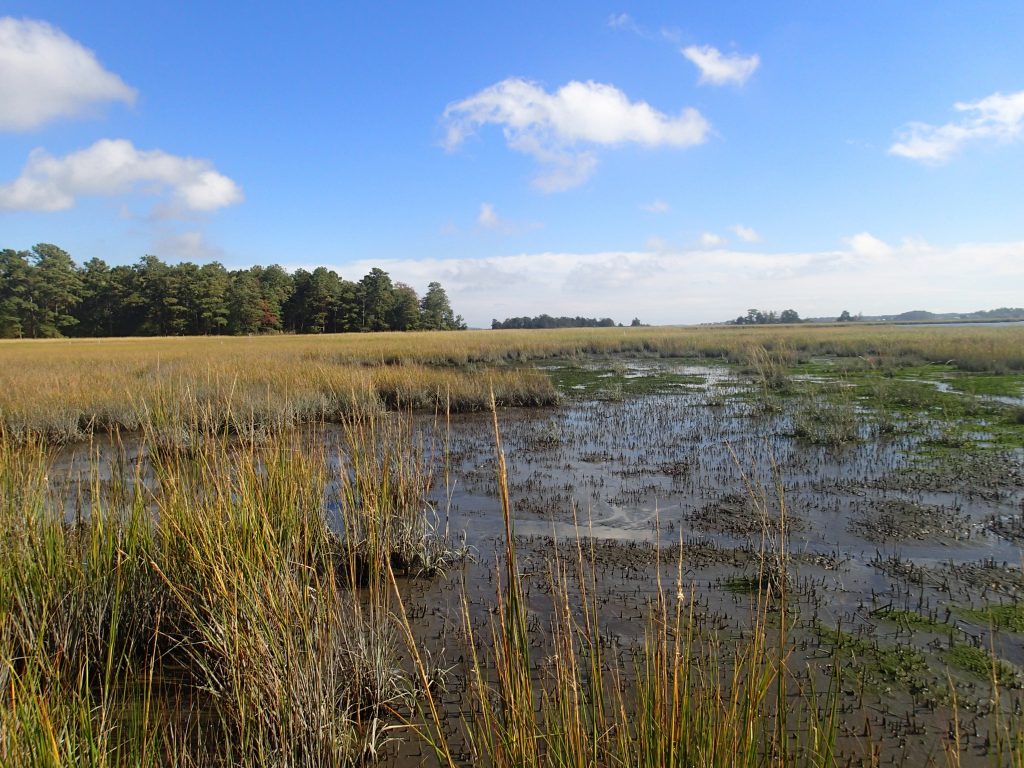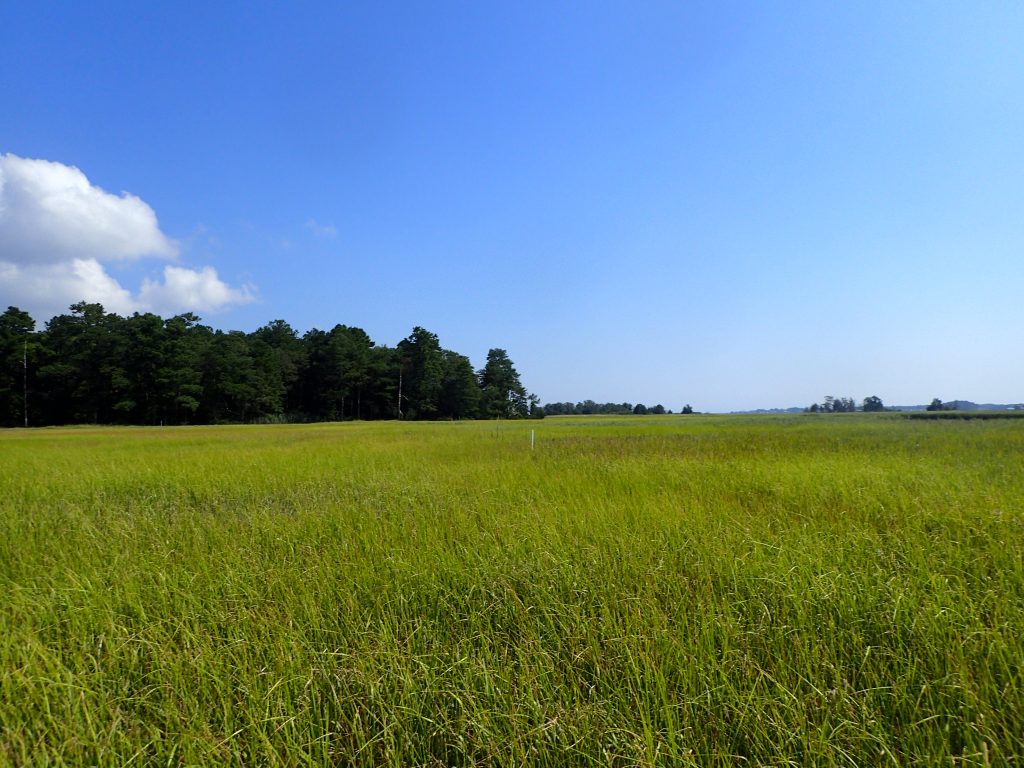
Facebook Twitter Instagram YouTube RSS Feed
Written on: May 20th, 2024 in Beneficial Use, Wetland Research
By Alison Rogerson, DNREC’s Wetland Monitoring and Assessment Program
For any homeowner with a dock leading out to tidal waters in Delaware or any boat angler who likes to put in at a public ramp and go crabbing, fishing or just boating around the Inland Bays, you are familiar with the issue of rivers shoaling and channels silting in. It is a nuisance to live with but it’s an indication of a larger coastal issue related to shoreline erosion and movement of sediment and DNREC is working towards a solution.
It is no secret that Delaware is losing coastal habitat and wetlands to the impacts of sea level rise and erosion. As coastal wetlands become permanently flooded by rising water levels and wash away the dirt, or sediment, gets stirred up, carried away, and settles into deeper channels. Similarly, when severe storms and destructive wave energy erodes a coastal wetland apart, those sediments wash into the waterways and settle in channels. This pattern repeats daily and eventually the river channels start to build up, becoming shallower. This cycle can continue until channels are so shallow it isn’t safe to boat on them. Other sources of sediment, such as from construction runoff or storms, also contribute to in-channel build up.
The Idea
Dredging navigable channels to keep them wide and deep for easy boating has been going on for decades. Historically, the material collected was pumped into a contained disposal site, a big land-based dirt bathtub if you will, where the water could drain out and the sediment would remain. In these upland disposal sites, rich aquatic sediments are stored and not put to any use. The thinking behind beneficial use of dredge material is to put sediment back where it came from and where it can do some good. Place the dredge material carefully on wetlands that are stressed, sediment-starved, eroding and sinking. When done thoughtfully, this addition of material gives wetlands an elevation boost to stay ahead of sea level rise, as well as a nutrient boost to encourage strong plant communities and therefore soil stabilization.
Beneficial use for wetland restoration can be done in several ways. Thin-layer application is when a few inches up to a foot of material is added to an existing wetland that needs help. Conversely, thick-layer application of up to several feet of material can be used to rebuild a former wetland that has already disappeared. In the middle, dredge sediment can be used to ‘fill potholes’ in wetlands that still exist but are experiencing pooling or break-up, and where big sections are failing and falling apart from the inside. In all cases, the results will be muddy at first as added material dries out a bit and plants start growing back in. Full recovery can take a few years, so be patient.

Working Together
Bringing the world of dredging together with wetland restoration requires careful consideration of the plant community, sediment types and weight, dredge volumes and wetland elevation, sediment containment and tidal connection, sustainability and even aesthetics. In 2012, DNREC completed its first beneficial wetland restoration demonstration project at Pepper Creek and Piney Point Wildlife Area. This was a collaboration between two DNREC programs: the Wetland Monitoring and Assessment Program and Waterway Management Section. Each program specializes in specific, technical work that when put together, allowed the thoughtful execution that turned out to be a success.
The many lessons learned from 2012 are being put to good use today as DNREC is working on several dredge and beneficial use wetland restoration projects on the Delaware Bay and Inland Bays. Each project presents its own challenges and specifics, and each has its own timeline. It’s an exciting time for DNREC to build the knowledge and skills to take the lead in tackling two big topics at once. Together, these projects will improve navigation in Delaware’s waterways and increase and improve coastal wetland habitat and water quality.


How This Impacts Boaters
During dredge operations, residents will be able to see and hear the dredge equipment working and running. Operation hours may depend on the day of the week and staffing, but also factors like tide and weather. Safe working conditions for everyone involved is a priority. Likewise, the wellbeing of fish and wildlife is important, so operations may be required to stop for several months in accordance with state and federal requirements to allow many species to nest and breed in summer months. This varies by location and project.
Pipelines will extend from the dredge to the beneficial use sites, sometimes a short distance, sometimes several miles. Pipelines often float and are visible and should be marked with buoys, but boaters should be on alert and stay a safe distance away. Visit DNREC’s Shoreline Management webpage to stay informed on when and where these projects are happening.
The future is bright for DNREC as several programs come together to increase our capabilities and help solve multiple environmental issues at once. Beneficial use for wetland restoration is still an emerging field and DNREC is proud to be exploring new technology to address issues.